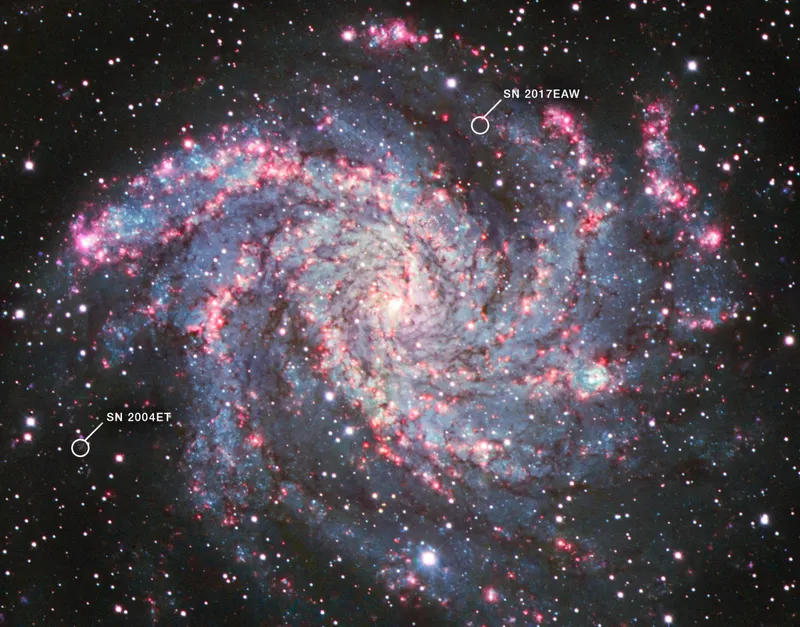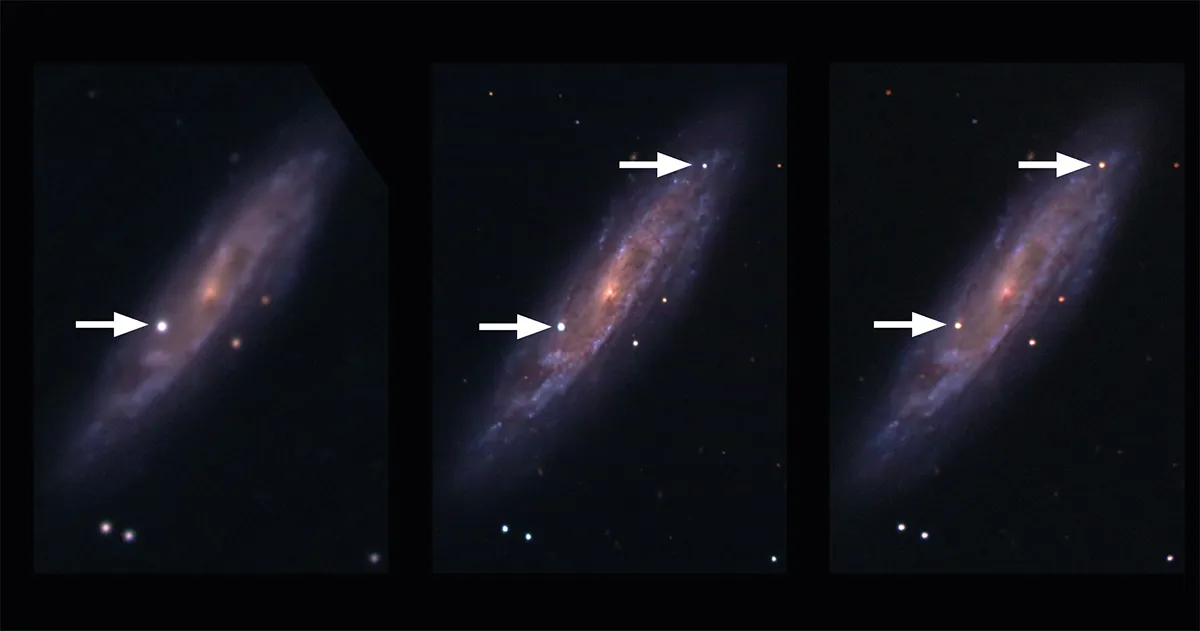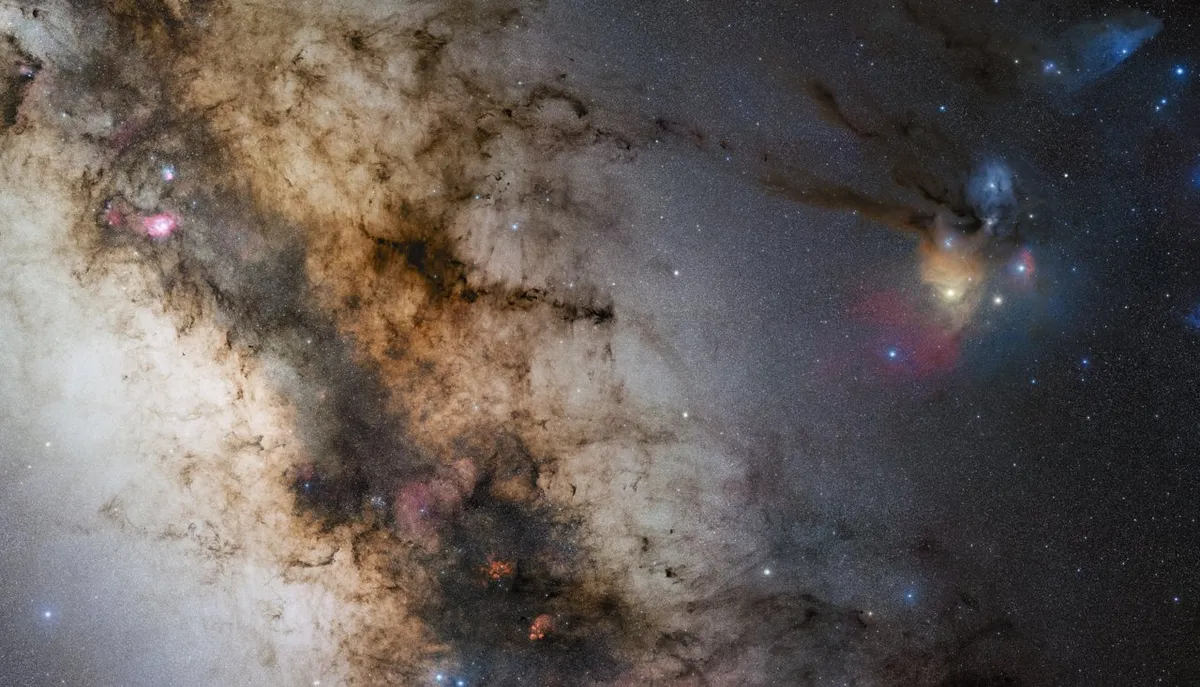Astronomers all over the world dream of a bright supernova. We haven’t caught such an event in our own Galaxy since before the telescope was invented, and a typical system like the Milky Way might expect no more than one a century.
Some galaxies seem blessed. M61, for example, a rare spiral galaxy in the Virgo Cluster, has had eight since 1900.

Why some galaxies should have more supernovae is something of a puzzle. Most supernovae represent the death of massive stars, and so galaxies with more supernovae are likely to have more massive stars.
As such behemoths burn through their fuel quickly, living for only a few hundred million years or so, their presence indicates recent star formation.
Supernovae are therefore signs that a galaxy is alive and happily making stars.
Read more from Chris Lintott:
- How do black holes form?
- How do binary stars survive in star clusters?
- Solving the three-body problem in astronomy
Galaxies that have more supernovae do have higher rates of star formation but otherwise appear completely normal, with little to distinguish them from their neighbours.
An interesting study takes a close look at NGC 2770, a spiral galaxy that appears to buck this trend.
3 definite supernovae have been found in the galaxy in the last 20 years – in 1999, 2007 and 2008 – and a fourth candidate, in 2015, is either a supernova or an outburst from a type of giant star called a luminous blue variable.

Despite these fireworks, NGC 2270 seems to have a normal, rather than an enhanced, star formation rate. What’s going on?
Previous attempts to work out how many stars NGC 2770 is forming depended on observations made with a radio telescope in Westerbork, the Netherlands.
Hydrogen is the fuel for star formation and so finding a galaxy rich in the gas usually means a more productive stellar nursery. Based on these observations, NGC 2770 seemed to have a star formation rate of about one solar mass per year – more or less the same as our own Milky Way.
To explain the observed burst of supernovae, a rate of 20 times that would be necessary.
So, how do we explain this difference? In the study I mentioned above, a team led by Michal Michalowski of the Adam Mickiewicz University in Poland lay the blame on dust, so often a confounding factor in observations.
Dust – particles of silicon and carbon – absorbs light, making the galaxy appear fainter in the wavelengths that reveal star formation than would otherwise be the case.
Dust is associated with star formation, so it’s not unexpected for the two to go together, but the size of the correction is surprising.
Once dust is properly measured and accounted for, the star formation rate for the galaxy is nearly 50 solar masses per year: more than enough to explain the supernovae.

But why does NGC 2770 have such a high star formation rate? One possibility is that it may have just survived an interaction with a neighbouring galaxy.
There’s a faint bridge of matter linking the main galaxy to one of its companions, a typical sign of an ongoing merger.
Such interactions often stir up gas, triggering star formation. It’s possible that our own Milky Way might undergo a similar burst of star formation in a few billion years when it interacts with Andromeda.
Impatient astronomers may not want to wait that long, though, and will be keeping their fingers crossed in the meantime.
Chris was reading NGC 2770: high supernova rate due to interactionby Michał J. Michałowski et al. Read it online at https://arxiv.org/abs/2008.08091.
This article originally appeared in the October 2020 issue of BBC Sky at Night Magazine.

